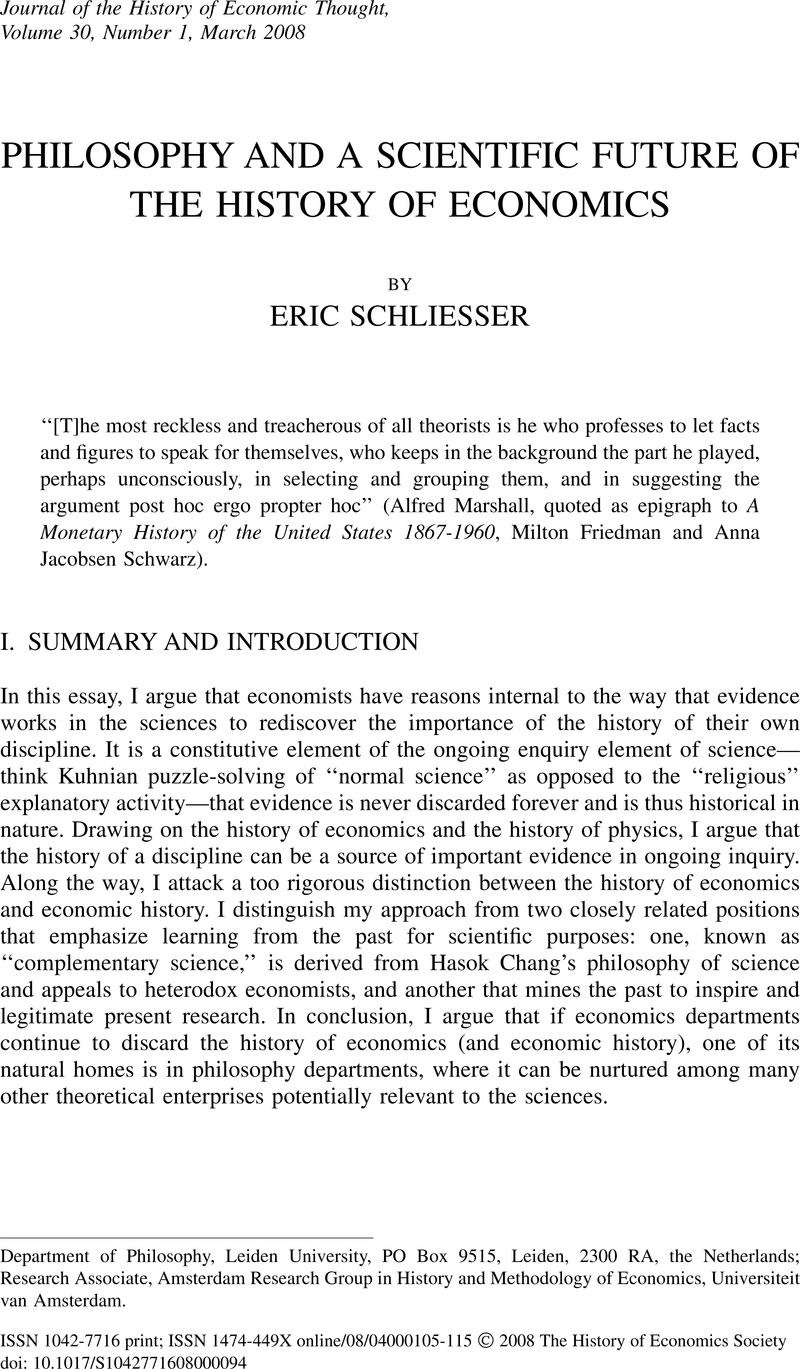Crossref Citations
This article has been cited by the following publications. This list is generated based on data provided by Crossref.
Schliesser, Eric S.
2010.
Inventing Paradigms, Monopoly, Methodology, and Mythology at 'Chicago': Nutter and Stigler.
SSRN Electronic Journal,
Schliesser, Eric
2012.
Inventing paradigms, monopoly, methodology, and mythology at ‘Chicago’: Nutter, Stigler, and Milton Friedman.
Studies in History and Philosophy of Science Part A,
Vol. 43,
Issue. 1,
p.
160.
Lefevere, Merel
and
Schliesser, Eric
2014.
Experts and Consensus in Social Science.
Vol. 50,
Issue. ,
p.
275.





